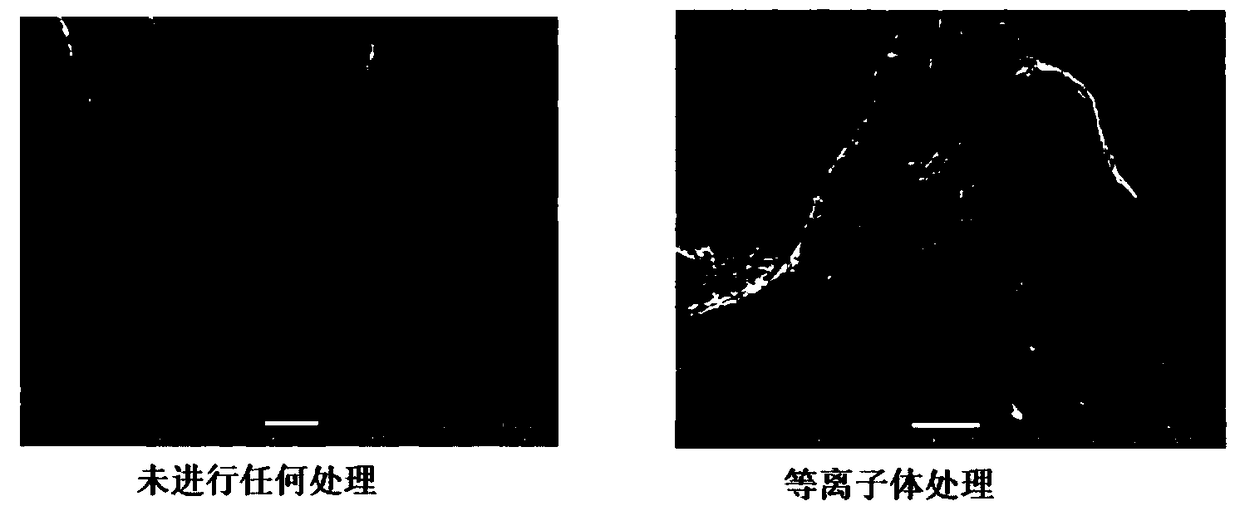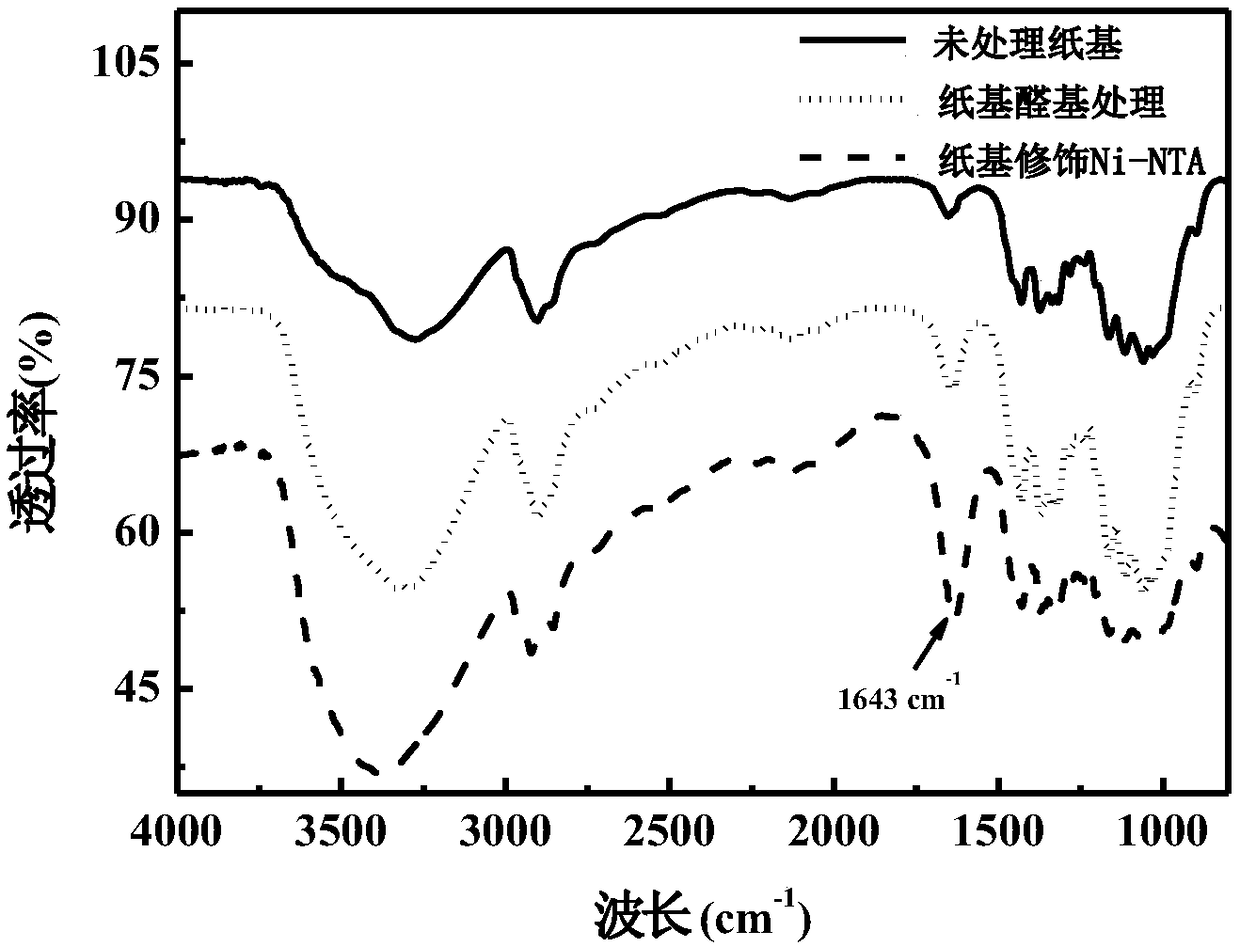Paper based sensor capable of detecting allergic reactions as well as preparation and application of paper based sensor
An allergic reaction and sensor technology, applied in instruments, measuring devices, scientific instruments, etc., can solve complex and expensive problems, achieve high-precision detection, convenient operation, and improved sensitivity
- Summary
- Abstract
- Description
- Claims
- Application Information
AI Technical Summary
Problems solved by technology
Method used
Image
Examples
Embodiment 1
[0039] A paper-based sensor capable of detecting allergic reactions, the preparation method of which is as follows:
[0040] 1.1 Synthesis of Ni-NTA:
[0041] (1) NTA: At 0°C, add 1.05 g of bromoacetic acid into a round bottom flask, and dissolve it with 8 mL of sodium hydroxide. Dissolve 1g of N-carbobenzyloxylysine in 10mL of sodium hydroxide, then add it into the flask, mix well, stir at room temperature for 2h, and then heat to 50°C for 19h. At 0°C, 5 mL of concentrated hydrochloric acid was added to the reacted solution to form a precipitate, which was filtered under reduced pressure to form a white powder. Dissolve 2 g of the obtained white powder in 25 mL of methanol, add 100 mg of palladium carbon, fill the flask with hydrogen, stir the reaction mixture at room temperature for 12 h, filter the solution under reduced pressure to remove palladium carbon to obtain NTA, the reaction formula is as follows:
[0042]
[0043] (2) Ni-NTA: Take 1mg of NTA and 5mL of NiCl 2 ...
Embodiment 2
[0058] A paper-based sensor capable of detecting allergic reactions, the preparation method of which is as follows:
[0059] 1.1 Synthesis of Ni-NTA:
[0060] (1) NTA: At 0°C, add 2.1 g of bromoacetic acid into a round bottom flask, and dissolve it with 4 mL of sodium hydroxide. Dissolve 0.5g of N-carbobenzyloxylysine in 10mL of sodium hydroxide, then add it into the flask, mix well, stir at room temperature for 2h, and then heat to 50°C for 19h. At 0°C, 10 mL of concentrated hydrochloric acid was added to the reacted solution to form a precipitate, which was filtered under reduced pressure to form a white powder. Dissolve 0.5 g of the obtained white powder in 50 mL of methanol, add 50 mg of palladium carbon, fill the flask with hydrogen, stir the reaction mixture at room temperature for 12 h, filter the solution under reduced pressure to remove palladium carbon to obtain NTA, the reaction formula is as follows:
[0061]
[0062] (2) Ni-NTA: take 2mg of NTA and 2.5mL of N...
Embodiment 3
[0075] A paper-based sensor capable of detecting allergic reactions, the preparation method of which is as follows:
[0076] 1.1 Synthesis of Ni-NTA:
[0077] (1) NTA: At 0°C, add 1.6 g of bromoacetic acid into a round bottom flask, and dissolve it with 16 mL of sodium hydroxide. Dissolve 2g of N-carbobenzyloxylysine in 20mL of sodium hydroxide, then add it into the flask, mix well, stir at room temperature for 2h, and then heat to 50°C for 19h. At 0°C, 2.5 mL of concentrated hydrochloric acid was added to the reacted solution to form a precipitate, which was filtered under reduced pressure to form a white powder. Dissolve 2 g of the obtained white powder in 100 mL of methanol, add 200 mg of palladium carbon, fill the flask with hydrogen, stir the reaction mixture at room temperature for 12 h, filter the solution under reduced pressure to remove palladium carbon to obtain NTA, the reaction formula is as follows:
[0078]
[0079] (2) Ni-NTA: take 0.5mg of NTA and 1.25mL o...
PUM
 Login to View More
Login to View More Abstract
Description
Claims
Application Information
 Login to View More
Login to View More - R&D
- Intellectual Property
- Life Sciences
- Materials
- Tech Scout
- Unparalleled Data Quality
- Higher Quality Content
- 60% Fewer Hallucinations
Browse by: Latest US Patents, China's latest patents, Technical Efficacy Thesaurus, Application Domain, Technology Topic, Popular Technical Reports.
© 2025 PatSnap. All rights reserved.Legal|Privacy policy|Modern Slavery Act Transparency Statement|Sitemap|About US| Contact US: help@patsnap.com



